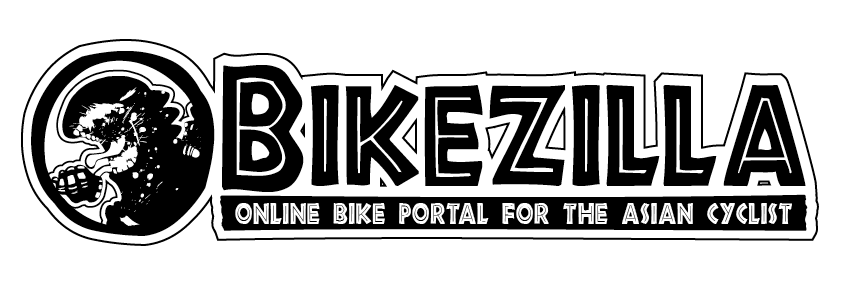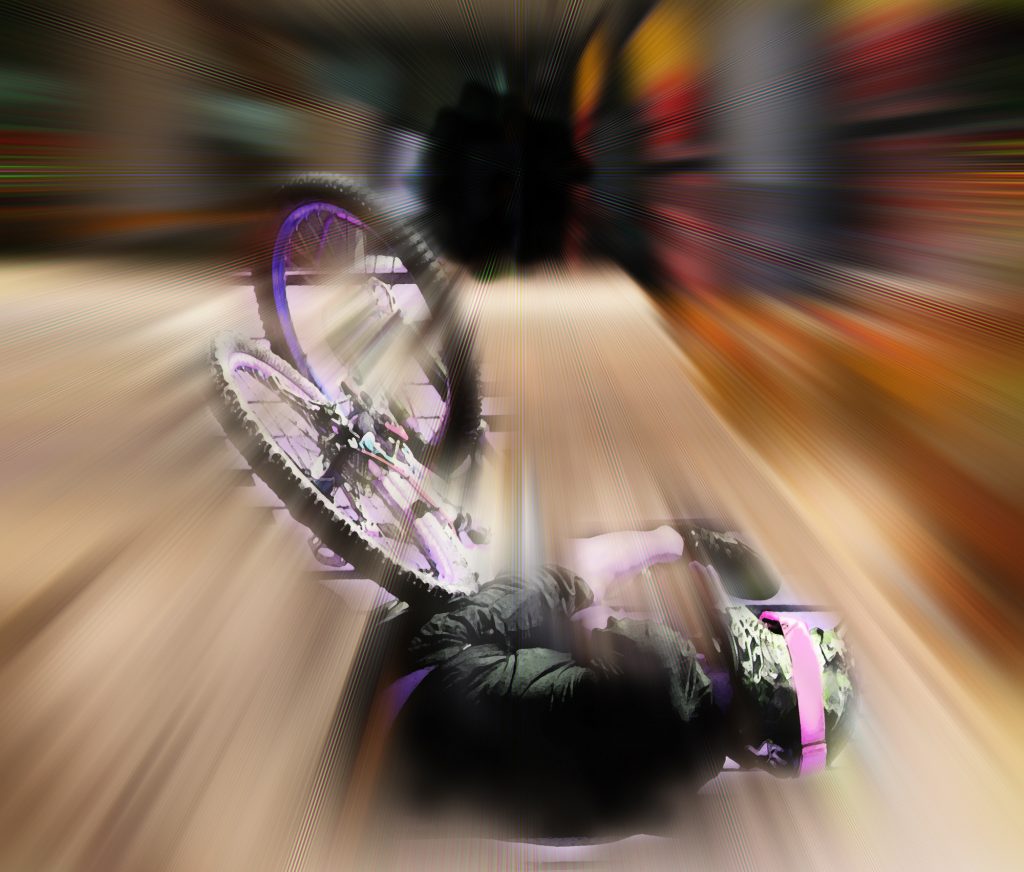HEALTH: UNDERSTANDING CYCLING INJURIES
THIS IS SERIOUS BUSINESS!

Sports-related injuries are a big issue, and naturally, cycling-related injuries are a constant worry for all cyclists. During happier, adrenaline-infused moments, precautions to sports injury could be carelessly forgotten. However, when something goes wrong, this could usually means a long road of painful downtime, recovery, therapy sessions, painkillers, supplements and surgeries. In some more serious instances, it could mean losing the physical ability to cycle altogether. Understanding the types of injury and the possible treatments to them could help remind us just how fragile your body is (in some ways) and probably instill some much needed caution. Read on to know the present day treatments available to different types of sports injuries.
TYPES OF CYCLING INJURY
There are 2 types of injury : Traumatic Injury and Repetitive Injury

Traumatic Injuries (Impacts)
This type of injury are usually caused by impact, e.g. a fall. They also usually involve the upper limb of the body – shoulder, elbow and wrist. Wearing protective gear and body armor could help reduce the risk of this type of injury. Wearing helmets during cycling reduces the risk of serious head injuries by up to 85%.
Many gravity sports cyclist choose not to wear armor (elbow pads, knee pads or chest protector) for fear of being viewed as "chicken" (timid). Others choose not to wear them citing reasons of restricting movements. Whatever the reasons may be, our advise is: "Wear appropriate protections for the type of rides you are going". Ignore the nay-sayers. It's for your own safety, as well as to keep you on your saddle for more quality shred-time.
Traumatic injuries becomes a medical emergency and requires immediate medical attention when a cyclist suffers loss of consciousness, loss of memory, nausea & vomiting, giddiness or suspected fracture. For non emergency cases, if pain and swelling continues on the injured region after a week of rest, it is advisable to consult a doctor and go for an x-ray scan to check on the injury.

Repetitive Injuries (Overuse)
As a sport that relies on constant repetitive motions (pedaling), it is inevitable that the knee and lower limb muscles are put through extreme amount of stress. This type of injury is by far, the more common reason which lead cyclists to consult an orthopaedic surgeon. Common repetitive injuries are related with the tendons. Once detected, it should be tended to as soon as possible so as not to escalate the injury. For normal training stress, ample rest and appropriate sport massages may ease the discomfort and help speed up recovery.
TYPES OF TREATMENT
Keyhole Surgery
One common impact injury is clavicle fracture (collarbone). Keyhole surgery is a common treatment for Acromio-Clavicular Joint (ACJ) Dislocation

After surgery for clavicle fracture and ACJ dislocation, it is usual for cyclists to be able to get back on their bike trainers in a week or two! As for actual riding, it would depend on the severity of the injury. The doctor would be the best person to assess the condition of the injury and the rate of recovery.
Options For Stubborn Tendon Problems:
Platelet Rich Plasma (PRP) Injections and Surgery (TOPAZ Procedure)

PRP Injection is an injection based treatment for many sports injury. It injects the injured area with platelet rich plasma to accelerate the healing. Platelets, also known as "thrombocytes", are blood cells whose function is to stop bleeding and rich in growth factors. PRP Injections are highly effective for muscle, tendon and ligament injuries. It is also used for treatment of cartilage injuries and osteoarthritis. Many cyclists who were introduced to PRP Injections were skeptical about injections as a treatment at first. But it is assured by the doctors that it has totally nothing to do with blood doping.
TOPAZ Procedure on the other hand, is a quick, simple and minimally invasive medical technique. The TOPAZ MicroDebrider employs patented Coblation®technology, designed to treat tendons. The TOPAZ technique has been associated with quick return to daily activities allowing for significant improvement in patient outcomes.

KNEE INJURY
Knee injury is a common cycling ailment. In fact, it is one injury that is commonly aggravated over time. Many cyclists try to live with their knee problems only to realize that their injuries had worsened to a critical state.
The 3 key words/terms in getting to know the basic construct of your knee are:
- Cartilage – the smooth surface that facilitate movement
- Meniscus – the shock absorber portion
- Ligament – stabilises the knee
Cartilage injuries are often associated with meniscus and ligament injuries. Common injuries of the knee includes meniscal tears, torn anterior cruciate ligament (ACL), arthritis (widespread destruction of cartilage).
TREATMENTS FOR KNEE INJURY
Meniscal Repair
This refers to the surgical "stitching" of the damaged meniscus.

Treatment Of Cartilage Injuries & Arthritis

For mild to moderate cases, joint supplements and injections of hyaluronic acid (lubricant) willsuffice. The added lubricants would ease the pain over time. But care should be taken not to worsen the condition through negligence or over straining. When that happens, the injured knee would still require surgery. For moderate to severe cases, surgery would still be the best solution.
Dr Kevin Lee of Pinnacle Orthopaedic Group recommends Jointplex Pro to his patients. He chose Jointplex Pro for its excellent natural anti-inflammatory and lubricating properties that are extracted from 4 herbs – ginger, turmeric, boswellia, winter cherry.
Hyaluronic acid is a component of joint cartilage and joint fluid. It is present in all our joints. Injecting hyaluronic acid into the injured areas is like topping up anti-inflammatory and lubricating agents into the body.
Surgery For Cartilage Problems and Arthritis
The 2 common surgeries for cartilage and arthritis is cartilage repair and knee replacement.
Cartilage Repair & Regeneration Techniques
As these surgeries are more complex as compared to the above stated ones, the strain on the patient and the cost of the treatment also differs. The techniques used will depend on:
- the age of the patient
- the location of the defect
- size of the defect
Microfracture and Enhanced Microfracture

This technique aim to liberate small numbers of stem cells from the subchondral (below cartilage) bone marrow and generate the growth of the bone itself. It is simple, and shows relatively good early results. Dr Lee said it is common to see cartilage repair patients back in marathons, playing ball games after their full recovery from the surgery.
What if the damage is too extensive for cartilage repair or regeneration?
Answer : Replacement (Artificial Joint Replacement)
What Is A Knee Replacement ?
Knee replacement refers to the surgery of exchanging part or all of the knee with artificial joints. The 3 common surgeries are: Total Knee Replacement, Partial Knee Replacement – Medial Compartment and Partial Knee Replacement – Patella (Kneecap) Compartment. Knee replacement (partial or total) is performed only in patients with end stage arthritis that has failed all non-surgical treatments. Earlier measures to treat arthritis include weight loss, activity modification, physiotherapy, joint supplements and knee injections.

TAKING CARE OF OUR BODY
We need to constantly remind ourselves that we love sports because we love our body (vice versa for some). For cyclists, we love cycling for its additional sense of freedom and fun factor. It would be foolish to neglect our body and miss out on all these that we worked so hard for. So let's ride hard, ride safe, rest well and eat well.
Special thanks to Dr Kevin Lee for sharing his notes with us from his recent seminar "Injury on 2 Wheels"
Dr Kevin Lee is the founding partner of Pinnacle Orthopaedic Group and visiting consultant for National University Hospital, Singapore.
Visit his website at www.p-ortho.com or contact him at 67370558 should you need his consultation.

